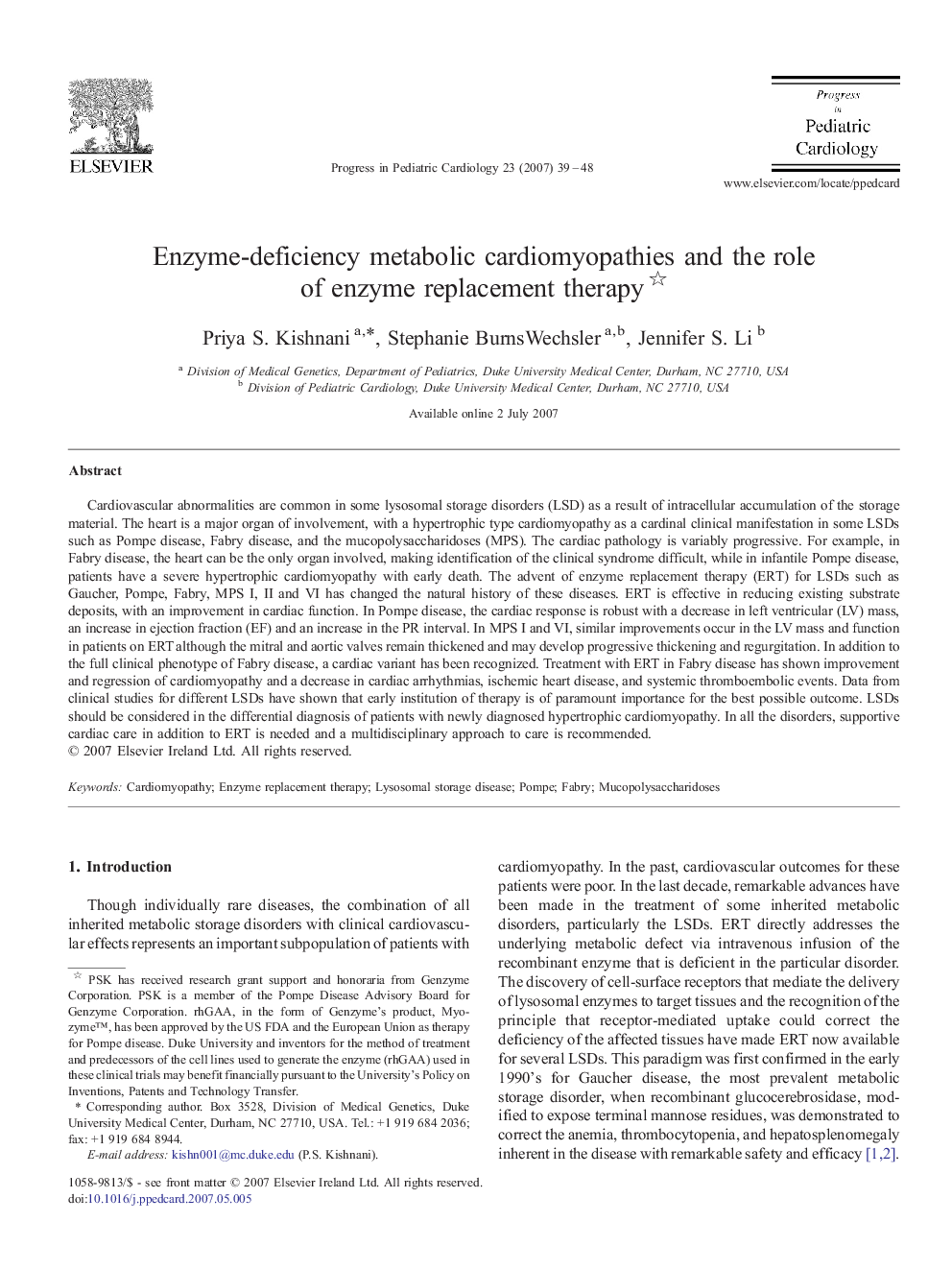| Article ID | Journal | Published Year | Pages | File Type |
|---|---|---|---|---|
| 3007375 | Progress in Pediatric Cardiology | 2007 | 10 Pages |
Cardiovascular abnormalities are common in some lysosomal storage disorders (LSD) as a result of intracellular accumulation of the storage material. The heart is a major organ of involvement, with a hypertrophic type cardiomyopathy as a cardinal clinical manifestation in some LSDs such as Pompe disease, Fabry disease, and the mucopolysaccharidoses (MPS). The cardiac pathology is variably progressive. For example, in Fabry disease, the heart can be the only organ involved, making identification of the clinical syndrome difficult, while in infantile Pompe disease, patients have a severe hypertrophic cardiomyopathy with early death. The advent of enzyme replacement therapy (ERT) for LSDs such as Gaucher, Pompe, Fabry, MPS I, II and VI has changed the natural history of these diseases. ERT is effective in reducing existing substrate deposits, with an improvement in cardiac function. In Pompe disease, the cardiac response is robust with a decrease in left ventricular (LV) mass, an increase in ejection fraction (EF) and an increase in the PR interval. In MPS I and VI, similar improvements occur in the LV mass and function in patients on ERT although the mitral and aortic valves remain thickened and may develop progressive thickening and regurgitation. In addition to the full clinical phenotype of Fabry disease, a cardiac variant has been recognized. Treatment with ERT in Fabry disease has shown improvement and regression of cardiomyopathy and a decrease in cardiac arrhythmias, ischemic heart disease, and systemic thromboembolic events. Data from clinical studies for different LSDs have shown that early institution of therapy is of paramount importance for the best possible outcome. LSDs should be considered in the differential diagnosis of patients with newly diagnosed hypertrophic cardiomyopathy. In all the disorders, supportive cardiac care in addition to ERT is needed and a multidisciplinary approach to care is recommended.
